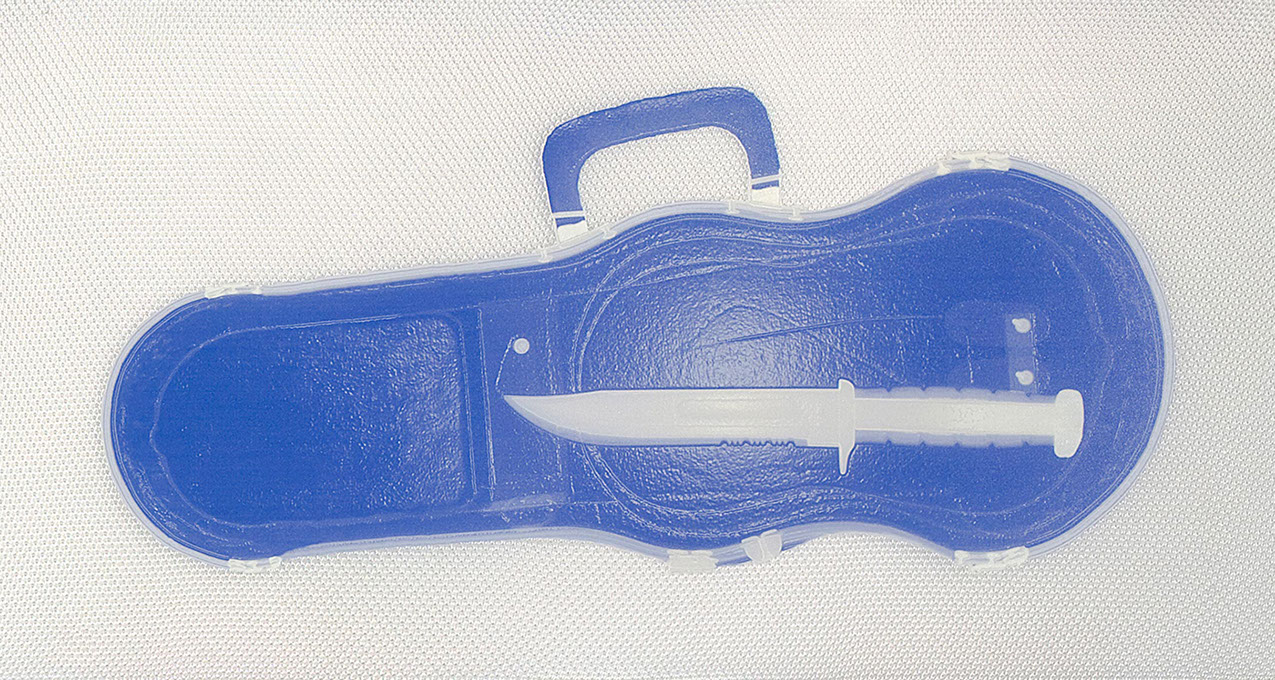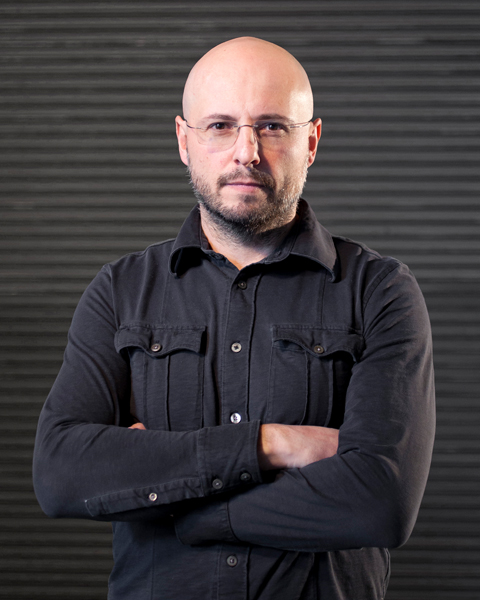
Interview with Blazo Kovacevic
VisArts Exhibiting Artist from September 11 – October 18, 2020
interviewed by VisArts intern, Iona Nave Griesmann.
Blazo Kovacevic (b. Podgorica, Montenegro) earned his B.F.A. in painting from the University of Montenegro in 1997, and his M.F.A. in painting from the Pennsylvania Academy of the Fine Arts in 2000. Incongruous social phenomena are reoccurring themes in his work; he is driven by a fascination with conflict. His work explores contradictory visual elements, and juxtaposes incompatible materials, ideas, behaviors, and technologies. Kovacevic has received numerous awards for his work, and has been interviewed and reviewed in distinguished art publications and media. His work has been shown in both Europe and the United States in numerous solo and group exhibitions. He is currently associate professor of art and design at Binghamton University (SUNY).
Your bio mentions you have a fascination with conflict, and that your work frequently employs contradictory elements that coexist with one another. In your opinion, do you have a particular piece that best achieves this contradiction?
I think that contradiction is very important for the artist to be successful. The artwork has to operate on several levels. Conceptually, on one level it is reaching some kind of state that I want the audience to be within my work, but also to depart from at the same time. So I’m searching for that sweet spot where two things can converge and coexist briefly.
For example, I can point out a few pieces that are not in the show, where I would use X ray technology to depict intricate details of a case that is protective of musical instruments. And inside of it, I would put a knife or some weapon that didn’t belong there. But because of the beauty of design in both the musical instruments and the weapon, they fit on some level, although they have this opposite effect when you look at that conceptually. It’s a game I like to play, and when I succeed I feel that the work has more mileage, that it can go further. I also work in the design realm a lot, and there I also find if you can achieve that in the clarity of the message without being explicit, you can go to that design multiple times and it will spark more interest, as a message that resonates much deeper.
Blue Violin Case (PROBE), 2010, Digital print on polycarbonate, 25”x47”
When we talk about the conflicting processes within my studio practice, we mainly focus on the durability of the work. In support of my concept I use the materials that are not compatible. I would paint on a tightly stretched steel mesh, or would mix acrylic and oil. More recently I started using opaque and transparent printing substrates simultaneously to achieve duality of images, for example one being visible only during the day, and the other only at night.
Of course there is the aesthetics, the classical category of art, which is very important to me. Even if it is about the ugly, it’s still aesthetics of some kind. In many instances people go “Oh! Look at that, very nice, vivid pleasant decorative elements in there,” and only when they approach the image, does it start doing something else. Often, it’s escaping you constantly because of the optical properties of the material I use, or it can reveal something entirely different.
Have you ever tried mixing an archival material with a more impermanent medium?
I stopped obsessing over the permanence of matter. Of course after all the training, you have this imperative, “oh let me do this properly and use proper archival materials,” but then you realize that if the work is good it will either survive or not, and it’s beyond you. I think a lot of stress and effort goes into preserving something that probably departs, or maybe even alters the tolerance of what that work might become in the future. I am not concerned with the impermanence of my work. Rather, I embrace it as the integral part of the life cycle.
Do you think there may be more power in impermanence, especially as different historical and societal concepts change around us?
As we learn everyday, life will present us with unexpected challenges, and being from the Balkans, I’m not new to these moments. We’ve been through civil wars and conflicts every 50 years throughout our history, and perceiving life as a safe or an unsafe condition, is narrow. It is constantly in the flux, and you need to adapt.
I think building resilience and being able to adapt to new environments is what artists do best. We always struggle on some level. Look at our daily routine – we make something out of nothing, and that is an existential pressure point we have to navigate all the time.
What experiences or questions drove you to center “Incited Still” around surveillance technology, and its use in the dehumanization of undocumented people?
I must say, my personal experience. In 1998 I was on a student Visa here, while pursuing graduate studies at the Pennsylvania Academy of Fine Arts. After graduation, I stayed for one more year on a practical training program, when the 9/11 hit.
The global dissent to violence and fear fundamentally changed the position United States had towards immigrants. As an artist who traveled between the US and Europe, I was painfully reminded of the inequality and vulnerability of being “the other”. My Yugoslav passport was an express ticket to the airport hell of thorough strip searches, harassment and intimidation.
Being stuck in the limbo of a “no man’s land”, in the liminal space in which the technology determines whether I am a threat to security, I started recognizing the patterns of this spectacle, and finding beauty in it. I was waiting behind, looking at the security monitors, probably seeing what I shouldn’t have, people going through this, their stuff being scanned… It was a voyeuristic feast, humiliating and pervasive, but it produced beautiful images, Could the beauty justify the harm? Naturally, I was attracted to this contradiction,
The global context has made this kind of invasive technology with the X Ray and the body scans, almost normal. The normalization of invasive methods that the government of practically every country is subjecting us to as citizens, is perverse. To travel, to enter buildings, to exit buildings… I find it really problematic.
No one will care for my medical X-ray , nobody could tell it’s me. Some highly trained people can, but I don’t care if somebody sees my medical X-ray. If I see a photo of myself, possibly naked I might think otherwise. Yet, the body scan resides somewhere in between. It’s not an X-ray, and it’s not really a photo. It shows the sculptural shape of you. It objectively reveals every little thing that you probably don’t want to share with others.
I was very upset that I didn’t have the access to the images of my body, both as an individual and as an artist. I felt violated by that policy.
What is your process of constructing the images used in Incited still?
I wanted that image to be large, to say “look at me! I’m Here!” But I really had trouble getting the images. I tried to reach out to the government, and in some countries they were more willing to help. At one point, I had access to the whole live screening process from an unnamed airport, that I was able to broadcast live. I felt that it was important to be seen.
I worked for years on building a kind of relationship with these entities that would allow me to insider look. It took a lot of work to gain trust, that I actually don’t have any beef in this fight, because we are already defeated. I don’t think we should rebel against this. There is no privacy to keep, to save and protect, it’s gone. However, that loss should not be forgotten, nor forgiven, and I am here to remind you.
To explain my process a bit – I would get the image from the border crossing, and there would be a scan of the whole vehicle, something similar to what we have right now in the show at the VisArts. It would be very small image, because it was visible only on screen, with low resolution. I was looking for something that you could look at from a distance but also close up, so I wanted that to be really sharp and clear. I couldn’t enhance the bad resolution image to get a wall piece, so what I had to do was recreate completely, and I even considered reenactments. I was thinking, how do you recreate something without departing too far from the original?
For that purpose, I worked with animators, recreating the scene completely, what we knew from the image, and from the media outlets. We would research what kind of vehicle it was, how many people were involved…We were also considering models of people that were of a certain height or size, in order to fit as many people into the vehicle as the news reported were in there, which was almost impossible. At one point we thought that there may have been some children as well. We had to go deeper and find out who really was in that vehicle as much as we could.
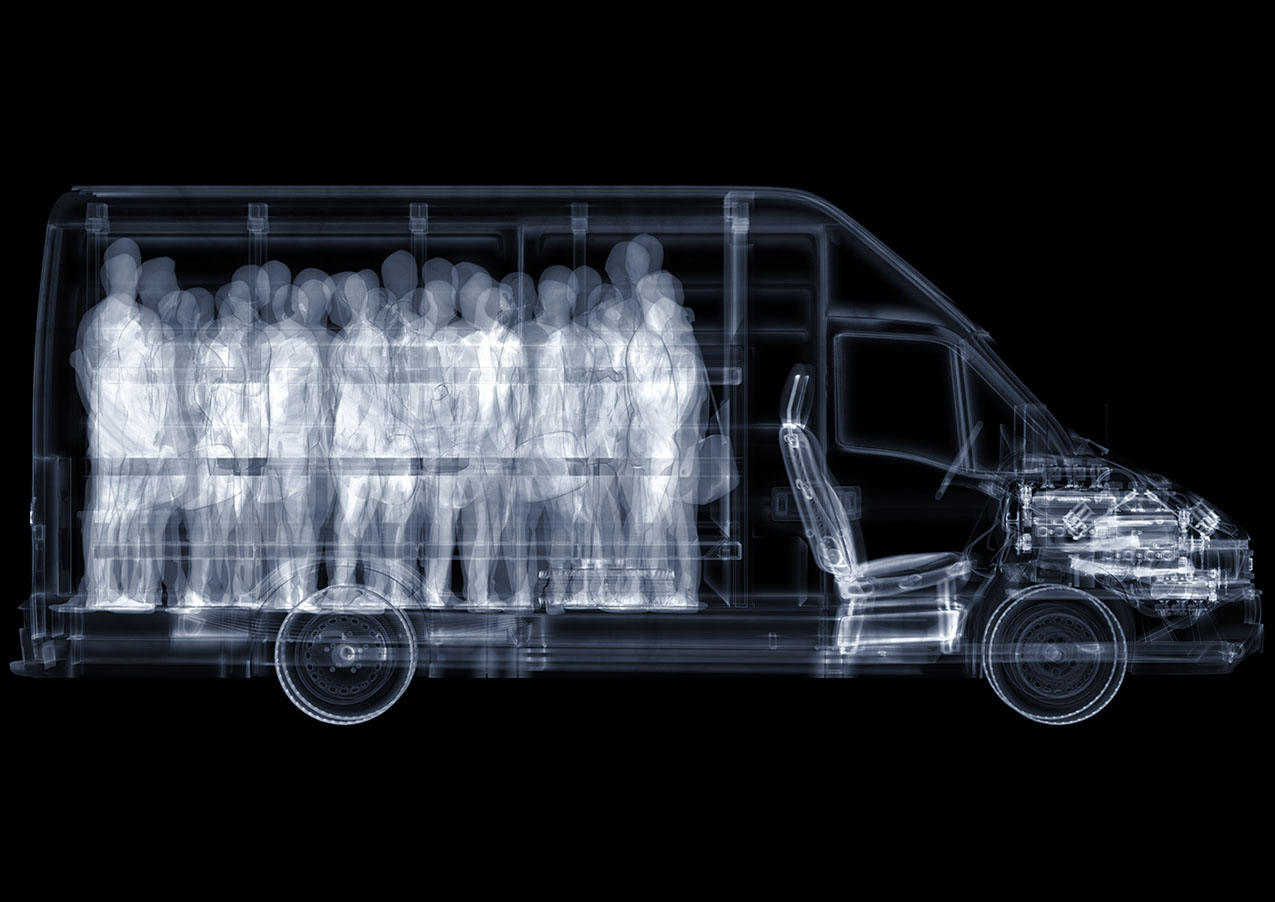
Incited Still, 2017, 3D-Modeling, Print, Installation, Virtual Reality, Animation, 3-D
So, what you are saying is that all of these constructions are based on real stories?
Absolutely. There was some material that was real, but blurry. But for some imagery we went like, “okay, what would be the next step in this invasive technology? What else could they do based on research?” It was almost like putting it through a film, a science fiction movie. We went a little far in some instances, for example the animation of the semitruck with the 3 illegal immigrants in the back trailer.
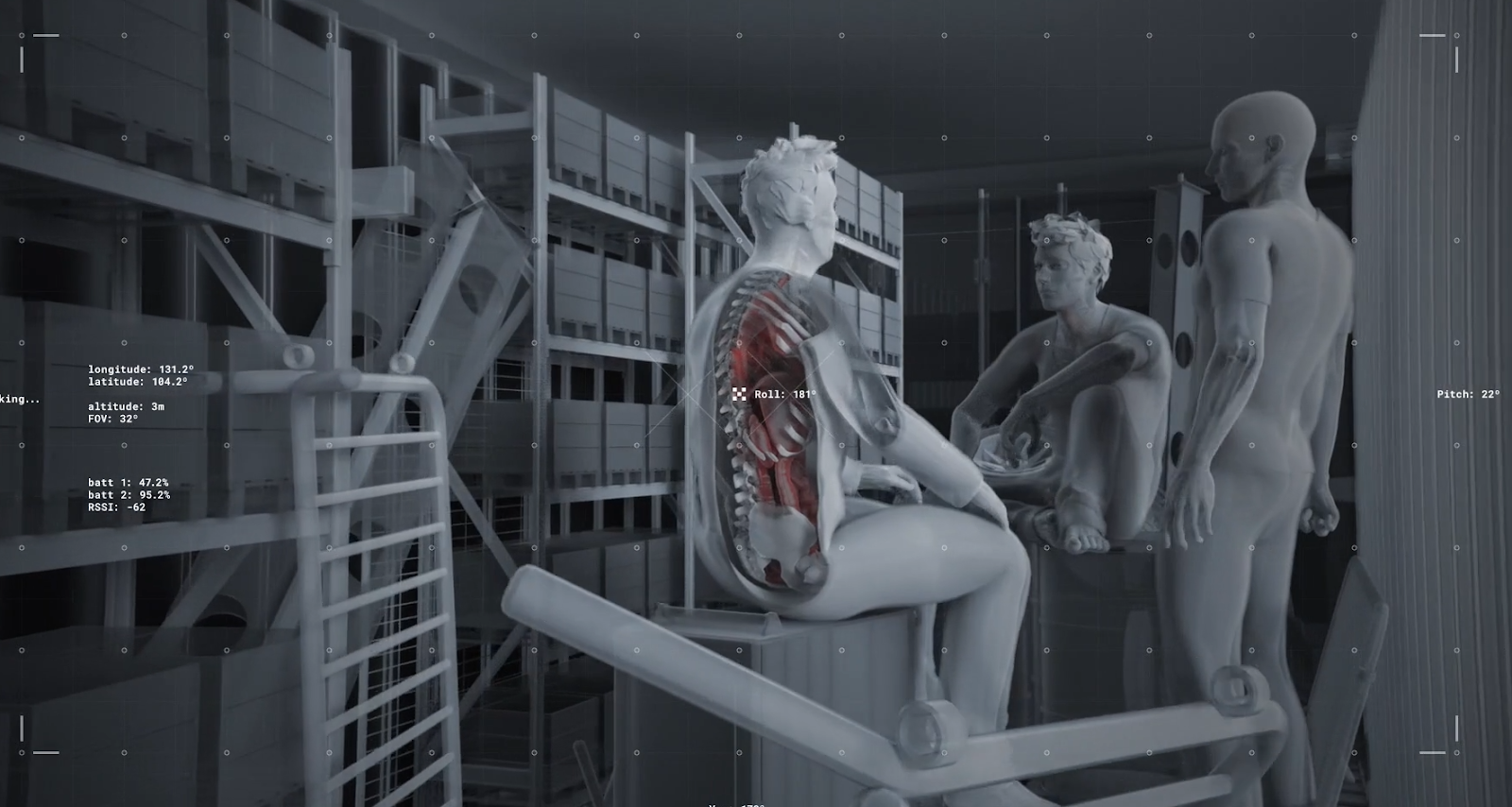
Incited Still, 2017, 3D-Modeling, Print, Installation, Virtual Reality, Animation, 3-D
In your description for the series ‘Sightliness,’ it is implied people anonymously sent you their bags of personal belongings for the creation of those images. Could you elaborate on how you obtained the X rays for that series?
I asked people for their personal purse or a bag which contained their belongings, like a phone, or a wallet. I did not know who contributed to that batch, but I had twenty-thirty bags with credit cards and phones for a very short period of time. I went and scanned them in one medical facility across the street. I did it for those twenty-thirty people because I felt that they needed to see their personal stuff, but through the eyes of an outsider, a stranger.
Another project that I cannot do for many reasons is actually very similar to that one, in a sense that I would use a scan, but this time of persons. To have a body scanner at the entrance of an empty gallery, and as you are entering you are creating a content for the show. And that’s tricky. As soon as the institution commits to something like that, you need to talk to lawyers, and it could be shut down. It is a shame I think, because it would be a good final chapter for this opus, as I hope to move to something else.
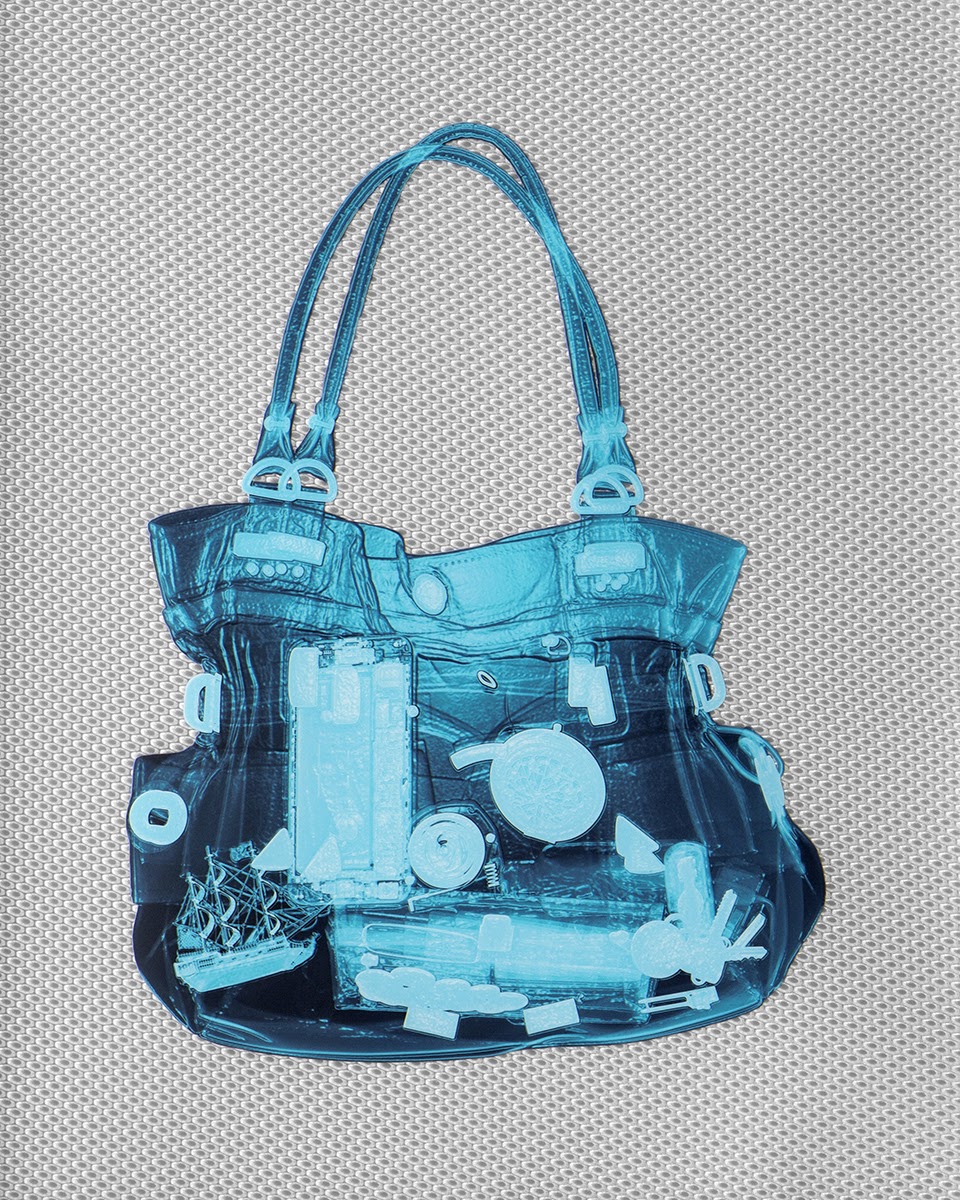
Sightliness, 2015, UV print on Polycarbonate Illusion Film, 30 x 24 in | 24 x 30 in
Are there any questions you hope your audience will consider when they look at your work, considering the polarizing topics of surveillance/immigration? Is there a sort of mission to change anyone’s mind about these issues?
It would be a complete lie if I said I didn’t want that, but is that my mission? I don’t know. I think missions are mostly expensive blunders, and I believe more in a strategy.
Today we are witnessing a lot. Not just a pandemic, social injustice, racial issues, dissolving of economy and societal support system, everything is hitting us all of a sudden at the same time, and it’s very related. As somebody who has lived in the Balkans, my formative years were turbulent. I have seen all kinds of things in life that would require the warning “viewer discretion is advised,” if they were on TV. In my culture, the horror of life, as well as its beauty, were presented in the same honest, and barren way, and were formative. I feel that similar turmoil is happening now, but I question the truthful report or account of it in the media, and thus I fear the that the public (re)action is manipulated.
That’s a great point. It brings up many questions of whether the fast nature of growth is really a good thing, especially in a capitalistic society that highly values growth and improvement.
Probably not. The speedy growth usually reminds me of cancer. I think balance is always needed. Living in Montenegro and growing up in some attempted form of socialism, I watched it transform from ideals of communal good, into oligarchy and oppression. The socialism went to capitalism overnight. These systems are neither good or bad, they have good and bad moments.
I try to explain to my students that the best point of view is one that is ever evolving. Relativism. You will never succeed in becoming objective, but at least the process is there that will get you to a better place.
Do you have any ideas on how your work will shift as technology continues to evolve and grow in the future?
I’m actually looking at this with new emerging technology. I did a virtual reality piece with a 360 Video in an attempt to put the viewer on the spot of the action. Imagine there are fifty-four people in a van that is crashing, and you are actually there viewing 360 degrees around yourself in that environment. You see other people there, you are all packed like sardines, and then you crash. You are one of those unfortunate people who had to be there, in that van, and risk their lives to escape the misery, oppression or war at home.
I think that the only right way to use the new technologies is if it works towards building our empathy. If you are seeing footage on TV or hearing and reading about a story, it gets ingested to some degree, but at one point of over saturation, it gets old. But if you are put on the spot, if you are part of that scene even virtually, you will start thinking, “Oh, this is really bad. I cannot breathe, I cannot drink, I cannot sit down!” This I hope generates deep, internalizing process which becomes transformative.
After that work, I did a reality piece where I used the game engine ‘Unity’, where again with the help of animators, we recreated an environment where you actually put that whole event on the table in front of you, almost like a chessboard. Just like a game, and it’s playful but very serious because there is a crash. And then, like in Apple promo videos, you can touch the screen on the roof of the vehicle and see all the people packed inside. As if you are playing God, you are moving pawns on the game board. I wanted to give you that kind of control, to change your point of view.
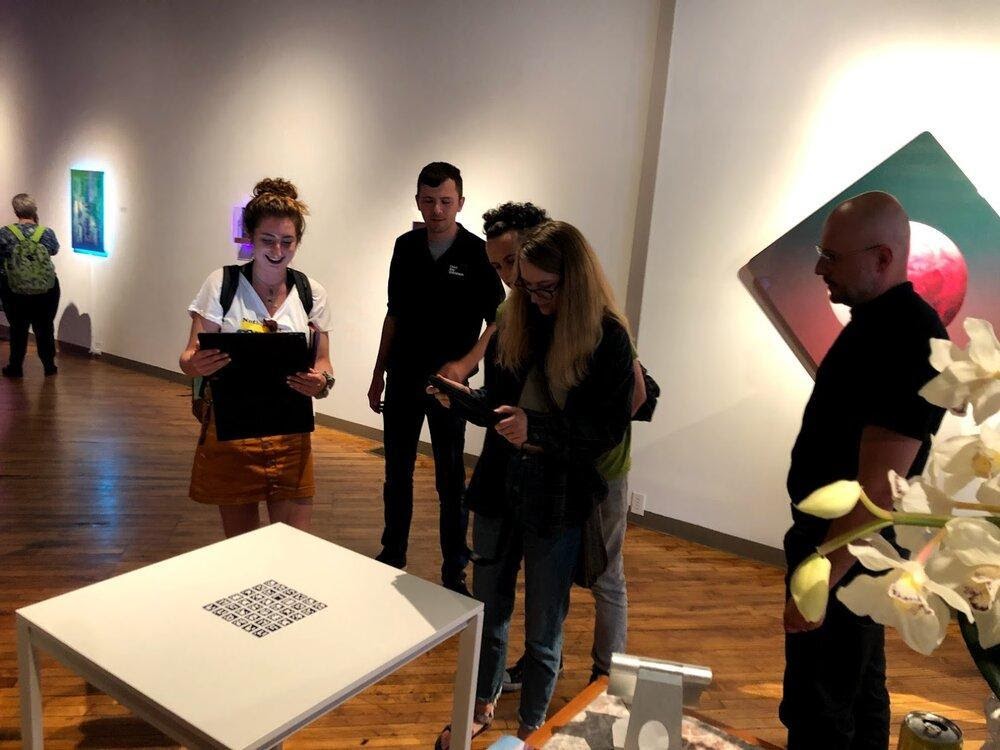
Visitors interact with a drone view reenactment of a crashing truck carrying 54 illegal passengers
Do you believe there will be future costs as technological advancement continues to prioritize surveillance over individual rights?
Yes. But as I mentioned before, you cannot see in how many directions this will grow. Of course being able to surveille so many people is bad, but it’s also great. For medical purposes, you can know so much about a huge number of people and use that for good. You can use artificial intelligence. Though that is opening all kinds of Pandora’s boxes. But I cannot see this as good or bad, and again it’s very contradictory.
I want to remain outside of that realm. I don’t have any social media presence because I don’t want to play that game. But on the other hand I’m there because someone else put me there, so in a sense you cannot control it. But the question is, who is going to control it, and for what purpose? We need to evolve as a humanity in the sense that we develop some better understanding of what that is, and how dangerous it is. I think it’s one of those potentially useful things, but it depends on how we use it.
Thank you for speaking about your work today!
To see more of Blazo Kovacevic’s work, Visit: http://blazokovacevic.com/index.html
This interview was conducted by Iona Nave Griesmann, an Intern at VisArts, and current Illustration/Graphic Design student at Montgomery College. Their work can be found at @Iona_Nave on Instagram.

